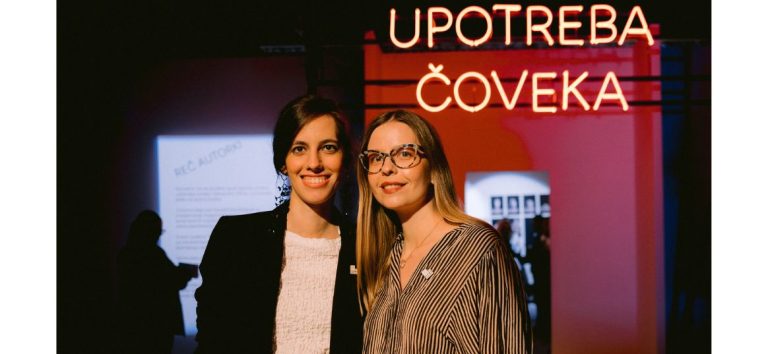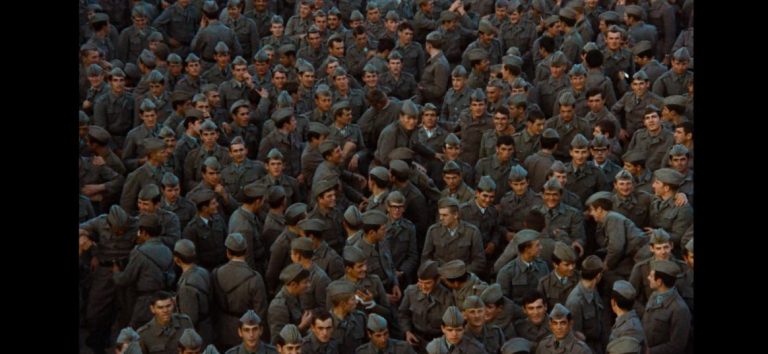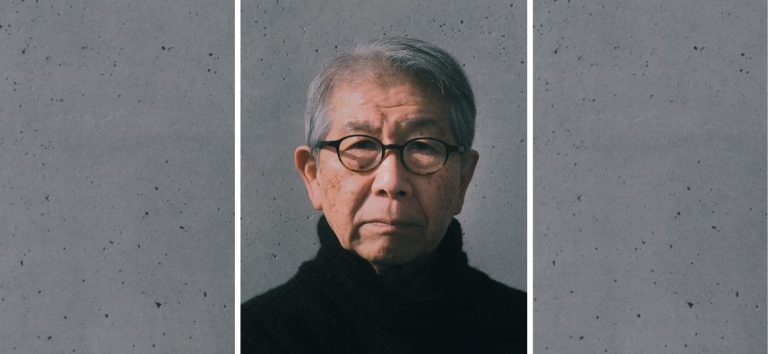Love is a topic that is always intriguing and inexhaustible, it’s an everlasting inspiration for artists but for those who aren’t artists as well. It’s a well-known thing, everyone’s aspiration, sometimes even a secret. Sometimes it’s bad luck, sometimes it’s repressed, but it’s always simply – interesting.
Those who were famous for their art, politics, science, social or any other form of public engagement, often drew attention to their private lives as well. Maybe they didn’t want their stories out in the public, but maybe, when it comes to great artists, we wouldn’t even have some of the most beautiful art of all time if it weren’t for their (un)happy loves.
These stories below are just some of the examples of how big of an influence the most intimate things have on the work of an individual, no matter how great of a genius someone is, and also how art is one of the ways of expressing the subtlest emotions, which then aren’t the artist’s emotions only, they become ours as well. From the text, we can tell that there were people who weren’t storing the power of love for themselves only, but they brought up generations on love. There were also those who were overlooked in the science world due to love. And while it would have been better for some if they had kept their love lives private, others paraded through the city in order to celebrate their weddings. Be that as it may, we don’t know if there’s a love story that can stay secret forever…
Milica and Jaša Tomić
The life of a Serbian politician, MP and activist Milica Tomić was continually marked with intertwinements of public and private, the public aspect will later harm her marriage with Jaša Tomić. As a daughter of Svetozar Miletić, one of the most influential politicians at the time, and later as a wife of a leader of the radical party, Milica actively participated in political and social issues from her early youth and until her husband died in 1922. The relationship that was at first of professional nature, turned into marriage, and then into something we would nowadays call the media affair – with political basis at that.
The newspaper ‘Zastava’, one of the most significant political journals of Serbs in Hungary, brought Milica and Jaša together. Zastava was founded by Miletić, while Milica was editing the newspaper during the years her father was in jail. As an editor of Zastava, Milica Miletić left it to the famous radical leader to manage the newspaper with the wish to save it from those who didn’t share their political views. Even though this young editor was dating another person at the time, Milica and Tomić will soon afterwards mark their affection with marriage. Ironically, the newspaper will be one of the causes of the unhappy end of their love, with her husband in prison this time. The conflict between Jaša Tomić and the liberal Miša Dimitrijević was public. Dimitrijević’s Bumper was one of the weapons in a rather dirty game that interfered with the married life of the conflicting party. Dimitrijević made Milica’s love letter public, which discredited Tomić’s marriage. Everything escalated with the murder. At the train station, next to today’s Limanska market, Tomić stabbed Dimitrijević to death, for which he was sentenced to six years in prison. After Jaša died, Milica withdrew from public life. She is remembered as a great women’s rights activist, dedicated to feminist and women’s emancipation issues that she made public in the ‘Žena’ (en. Women) magazine. She received an education in Novi Sad where she was born, as well as in Vienna and Pest. She spoke as many as four languages. Milica founded the Posestrima women’s reading room and was the first woman in 20th-century Europe to be signed as a magazine editor.
Mileva Marić and Albert Einstein
Work and knowledge of Mileva Marić were undeservedly left in the shadow of her husband, the same goes for the private lives of this married couple. Having dedicated her life to her family, Mileva remained marked by the suffering destiny that has become relevant in recent years, with the wish to point out the importance of this scientist for Einstein’s achievements, as well as for science in general.
The path of Mileva’s education went from Ruma, Novi Sad, Sremska Mitrovica, Šabac, Zagreb, Zürich, Heidelberg, to Bern. At one of her last destinations in Zürich, where she enrolled in ETH as the fifth woman that was accepted to this prestigious institution, she met her lifelong love – Albert Einstein. Fearing the relationship, Mileva left Zürich and went to Heidelberg, only to come back soon after at Albert’s behest. His parents were against their relationship because Mileva was three and a half years older than Albert and was not of Jewish descent. They also thought she ‘embarrassed’ her family by having an illegitimate daughter Lizerl at the age of 27, in Novi Sad. The daughter either died or was placed for adoption. A crisis in their marriage occurred when Albert contacted his cousin with whom he was in love. Following Albert’s relocations and his university career, Mileva raised their sons Hans Albert and Edward, who were baptized in the Nikolajevska Church, according to Orthodox customs. Moving to Berlin was the beginning of the end for their marriage since Albert’s lover also lived in Berlin. Albert made a list of rules of conduct for his wife. This difficult family situation ended with Mileva’s leaving for Zürich and, finally, the official divorce in 1918. The property dispute with Albert and the family tragedies that befell Mileva weakened her physical and mental health. She died in a Zürich hospital in 1946, with zero words dedicated to her in any newspaper in Yugoslavia. In the decades to come, it will be shown that there was clear evidence of Mileva’s contribution to the successes attributed to her husband, and one of the first people to deal with this issue was Abram Joffe. Abram confirmed having an insight into the original scientific works of Einstein’s authorship, that were initially signed ‘Einstein-Marity’.
Marija and Jovan Trandafil
Few couples are known to have dedicated their lives and property to humanitarian work, as is the case with Marija Trandafil and her less known spouse, Jovan. Born in Novi Sad back in 1816, in a family of Greek origin, Marija Popović married a Greek fur merchant from Ardeal (Transylvania). By marrying, this respectable merchant received the status of a free citizen of Novi Sad and the right to move here, where he bought a house on the main street, the so-called Property. In the history of Novi Sad, Jovan Trandafil is remembered for the renovation of the Nikolajevska Church, a family endowment, in which they both rest. In mutual agreement, the spouses made two wills in 1862 and 1878, according to which they bequeathed the property to the Serbian Orthodox Church and Matica Srpska. They gave money for high school scholarships, orphanages and hospitals in Osijek, Sombor and Novi Sad, but also to poor girls for marriage, widows and financially weakened merchants and craftsmen. After the death of Marija Trandafil, a foundation in her honour was established, thanks to which many students received their education. It also funded an Institute for the Support of Orphans and Poor Children in Novi Sad.
Lenka Dunđerski and Laza Kostić
Neither the age difference nor the social status stifled the huge emotions that existed between the greatest Serbian romantic poet and Lenka Dunđerski, while their love is forever witnessed in, in the opinion of many, the most beautiful song in the Serbian language – Santa Maria della Salute. The daughter of a respectable merchant, grain producer and philanthropist Lazar Dunđerski, Lenka was conspicuous for her height and unusual beauty, but was also unhappily in love with a friend and a peer of her father, the famous Laza Kostić. After returning from Cetinje, Laza often stayed in the Dunđerski castle, where he met Lenka and from where he went to the Krušedol monastery, due to his “illicit” emotions towards a 29 years-younger girl. Laza himself tried to suppress this relationship by advising Lenka to get married, he even tried to introduce her to Nikola Tesla, to whom he wrote about the angelic beauty of this girl. This love was platonic and without recognition, as evidenced by Laza’s diary, where he wrote down everything that was not possible in reality. At Lenka’s father behest, Laza married Julijana Palanački, a respectable and rich older lady. Lazar Dunđerski was even the best man at this wedding, after which the couple goes on a honeymoon to Venice. Lenka Dunđerski’s death came suddenly, and although they claimed she passed away from typhus fever, there is a different kind of truth in the diary of the unhappy poet. It was inappropriate to talk about the girl’s suicide. In Venice, Laza started working on his most famous poem, and eight years after Lenka’s death, he began to record his dreams in which she was always the main character. After Lenka’s death, Kostić bequeathed money to the monastery in Krušedol, where prayers were read for many years on the date of her death. He did the same for his wife Juliana in the monastery in Vrdnik.
In Srbobran, in 2006, they handed over an award for the most beautiful love poem written in the Serbian language and named after Lenka Dunđerski, while one of the winners, Matija Bećković, stated this was one of the favourite awards that he received.
Jovan Jovanović Zmaj and Ruža Ličanin
When Zmaj was getting married, they all made sure that the whole Novi Sad did not sleep for three days and three nights. On Saint Sava in 1862, the wedding guests sang and danced through the main streets of Novi Sad, led by Jakov Ignjatović. Pots and pans were dragged on the cobblestones, while the bill of the festivities was 207 forints: 155 pints (three-quarters of a litre) of wine, 146 pints of beer, 60 pints of Bermet (a dessert wine), 27 lemonades, 76 coffees, 25 cigars and 60 ordinary cigarettes were smoked. Zmaj was 28 years old when he proposed to a seventeen-year-old Eufrosina, whom he affectionately called Ruža (eg. Rose), the daughter of Pavle Ličanin and Paulina. They met at her sister’s sickbed. Unfortunately, Rose’s illness will separate them. In the letters they exchanged, Zmaj requested that Euphrosyne first answered the letters on her own, and only then show them to her mom and sister. Đura Jakšić described Ruža as something small, beautiful and above all – cunning. Zmaj dedicated the most beautiful verses of Đulići (a collection written before his wife’s death) and Đulići Uveoci (en. Đulić Withered) (written after Ruža’s death), which is considered an artistically strong collection. Before their marriage, people knew about two other girls Zmaj loved, a certain Manojlović from Sentomaš and Persida Pintorović, who was a famous translator for the theatre. However, Ruža was Zmaj’s biggest love, followed by the tragic losses of four children, which left behind some of the most famous and beautiful verses of romanticism.
From the diary of a young man in love, through the lament over unfortunate events, Zmaj told a great love story forever caught in verse. In romanticism, it was popular to write the so-called ‘rosaries’, cycles of love songs. Coincidentally or not, Zmaj called his wife ‘Rose’. In his famous collections, he used the Turkish word for rose – đul.
Author: Leona Pap
Photo: Wikipedia







